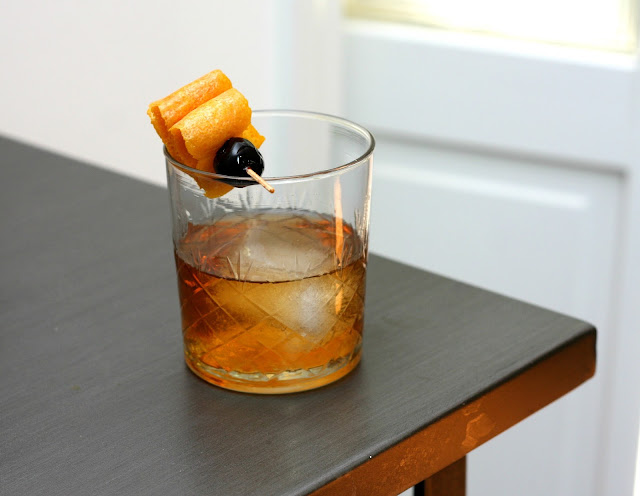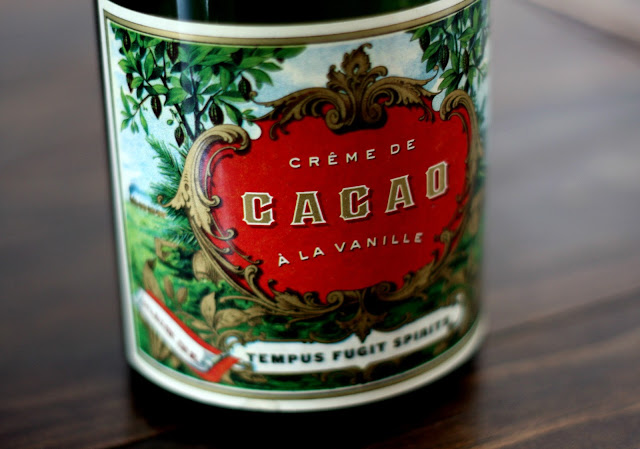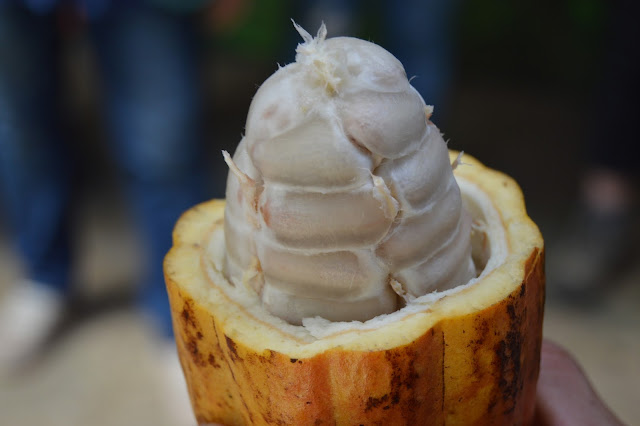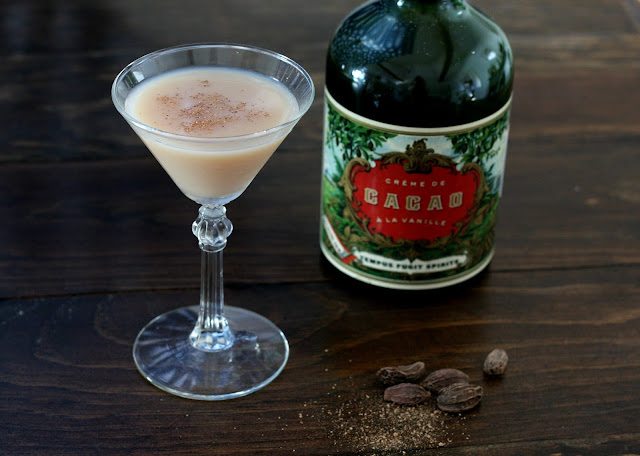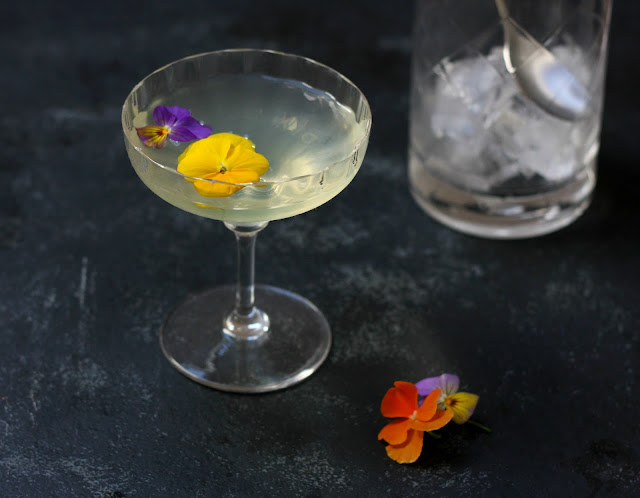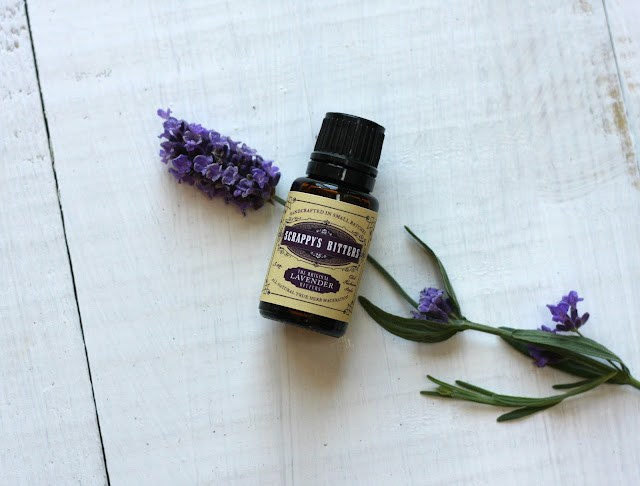I think most people would agree that the Old Fashioned is just a really good cocktail. It's simple, classic, and delicious. And because it's so simple and so good, there are a lot of variations out there. Some stay pretty close to the source material, like I did with my Autumn Cranberry Old Fashioned. Others go a bit farther afield with additional ingredients, like my Blood and Smoke or the Ward Eight, or new base spirits as in the Oaxaca Old Fashioned (tequila and mezcal) and the Gin-Campari Old Fashioned (gin and... you guessed it). Spirits, bitters, and sugar... it's a fun and easy combination to play around with.
In my favorite Old Fashioned recipe, I like to add a little liqueur from the jar of Luxardo cherries. So the Fancy Free seemed like a brilliant idea - it replaces simple syrup and/or cherry juice with Luxardo maraschino liqueur. Orange and Angostura bitters round it out. The recipe calls for bourbon, but I think it might be better suited for rye. It depends how you prefer your Old Fashioneds.
This cocktail is sweet and rich, with a lingering spice and bitterness. It doesn't stray too far from its inspiration - a wonderful, complex riff on a classic cocktail.
History: When I posted this, I incorrectly stated that this cocktail was a recent invention, but it turns out it's quite old! Which isn't too surprising, given its ingredients and simplicity. The recipe appears in Crosby Gaige's Cocktail Guide and Ladies' Companion from 1941. I found one blog that claims this is its first time in print.
I'd never heard of Crosby Gaige before, so I looked him up. Turns out he was a pretty interesting guy. Born in 1883, he was the son of a postmaster from Nelson, NY. He worked his way up to become a wealthy Broadway producer and publisher. His small publishing company attracted the likes of Virginia Woolf and James Joyce. He lost all his money and then earned it all back again. He he was quite the foodie and a huge fan of cocktails. "In the world of potables the cocktail represents adventure and experiment," he wrote. I entirely agree.
But where did Gaige get the recipe for the Fancy Free? Apparently he had a huge collection of recipe books, so it might have come from somewhere else. If any of you cocktail history buffs have additional information, I'd love to hear it.
Most of my info on Crosby Gaige came from this article and a Wall Street Journal article by Eric Felten called "Easier Does It: Starter Cocktails."
Fancy Free
2 oz. bourbon1/2 oz. maraschino liqueur
2 dashes orange bitters
1 dash Angostura bitters
Combine all ingredients in an Old Fashioned glass with a large ice cube. Stir to combine. Garnish with a large orange twist and a brandied cherry.
Recipe from Serious Eats.

